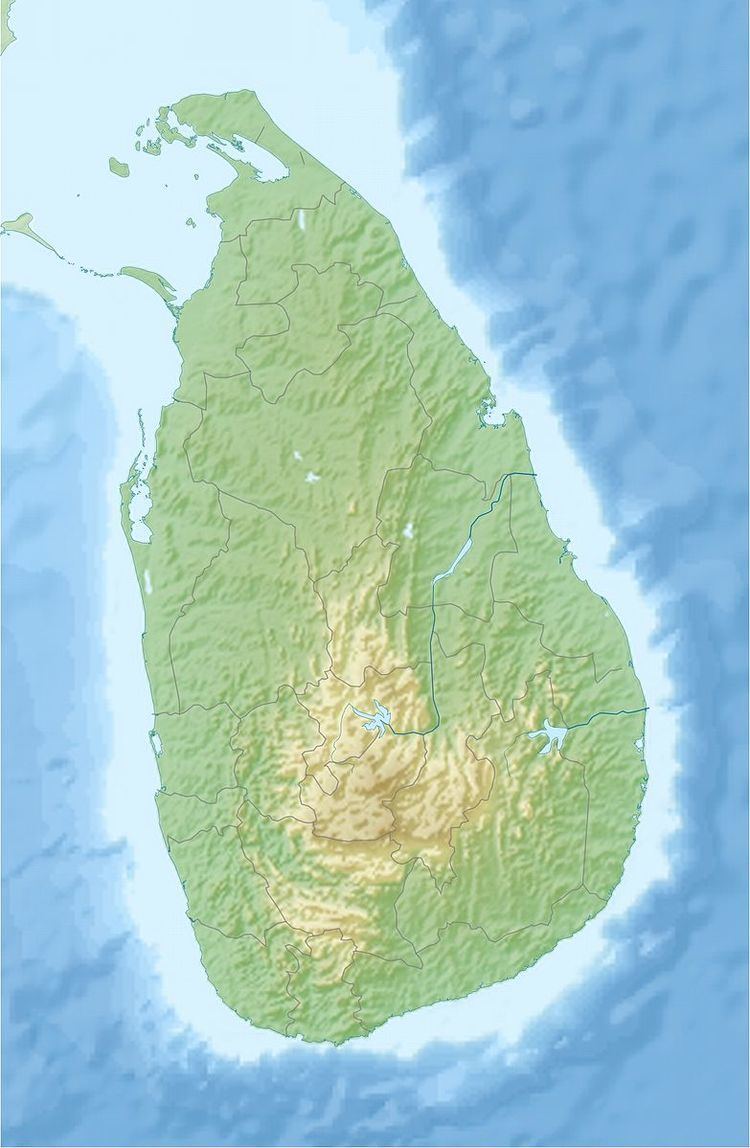Status Under construction Type of dam Gravity dam Construction began 25 January 2007 | Purpose Power Owner(s) Mahaweli Authority Opened 25 July 2016 | |
 | ||
Opening date 25 July 2016 (2016-07-25) Similar Randenigala Dam, Kalu Ganga Dam, Bowatenna Dam, Kelani River, Kotmale Dam | ||
Moragahakanda dam arial visuals
The Moragahakanda Dam is a large gravity dam, and the main component of the larger and more complex Moragahakanda — Kalu Ganga Project, currently under construction across the Amban River at Elahera, in the Matale District of Sri Lanka. Construction began on 25 January 2007. The maiden waters of the dam was released in January 2017. Morgahakanda/Kaluganga project is the last of the Great Mahaveli project
Contents
- Moragahakanda dam arial visuals
- History
- Dam and reservoir
- Irrigation
- Inland fishing
- Water supply
- Power generation
- Roads and bridges
- References
The larger combined project involves the construction of the Moragahakanda Dam and Reservoir, along with the separate Kalu Ganga Dam and Reservoir, for irrigation and power generation purposes. Both these sites would be located approximately 10 km (6.2 mi) apart.
The total development cost for both sites totals to approximately Rs. 48.145 billion (approximately US$370 million) and is being carried out by SMEC Holdings and Sinohydro.
History
According to the Mahaweli Master Plan of 1958, the development of Mahaweli the development was divided to three projects named A ,B and C out of which the last 'C' project was the Moragahakanda Multi-Purpose Reservoir. In 1977 the project was modified and the Accelerated Mahaweli Scheme(AMS) started and was completed in 6 years. However Moragahakanda was not in the AMS. The J.R. Jayewardene Government would later secure funding for the project from Japan but communal violence delayed the project. The project finally commenced in January 2007 with much fanfare but was delayed due to president Rajapaksa wanting to give the Mahaweli authority to his brother Basil Rajapaksa but attempts were dropped after protests by the Minister Maithripala Sirisena. However funds were denied to the project and work stalled, construction only started after Sirisena took the Health ministry instead in 2010. Progress at the site confirms this.
Dam and reservoir
The Moragahakanda Dam, will be a 65 m (213 ft) high gravity dam. The dam will create the Moragahakanda Reservoir, which will have an active storage capacity of 521,000,000 m3 (1.84×1010 cu ft) of water, at a surface elevation of 185 m (607 ft).
Two additional embankment saddle dams will also be built to contain the Moragahakanda Reservoir. The reservoir of the Kalu Ganga Dam will be linked via tunnel.
Irrigation
Water from both, the Moragahakanda and Kalu Ganga reservoirs, will be primarily used to support agricultural needs to an area of at least 81,422 ha (814.2 km2). This will increase rice production by 81% or 109,000 t (240,000,000 lb), amounting to an estimated monetary benefit of US$1.67 million, annually.
Inland fishing
The reservoirs would also create a source of inland fishing, generating approximately 4,700 t (10,400,000 lb) or the monetary equivalent of US$1.67 million, annually.
Water supply
Along with the reservoir of the Kalu Ganga Dam, an increase of 64,000,000 m3 (2.3×109 cu ft) of potable and industrial water supply could be ensured by 2032, to regions including Matale, Anuradhapura, Trincomalee, and Polonnaruwa.
Power generation
Water from the Moragahakanda Reservoir will be used to power the 25-megawatt Moragahakanda Hydroelectric Power Station, also currently under construction. The substitution of this hydropower with traditional fossil fuel power generation is estimated to save up to US$ 2.49 billion annually.
Construction of the power station costs US$382 million, with an IRR of 22%.
Roads and bridges
The construction of the dam and reservoir also required the construction of multiple access roads and rerouting of existing main roads, as well as the construction of the 300 m (984 ft) long Moragahakanda Bridge costing Rs. 308 million.
